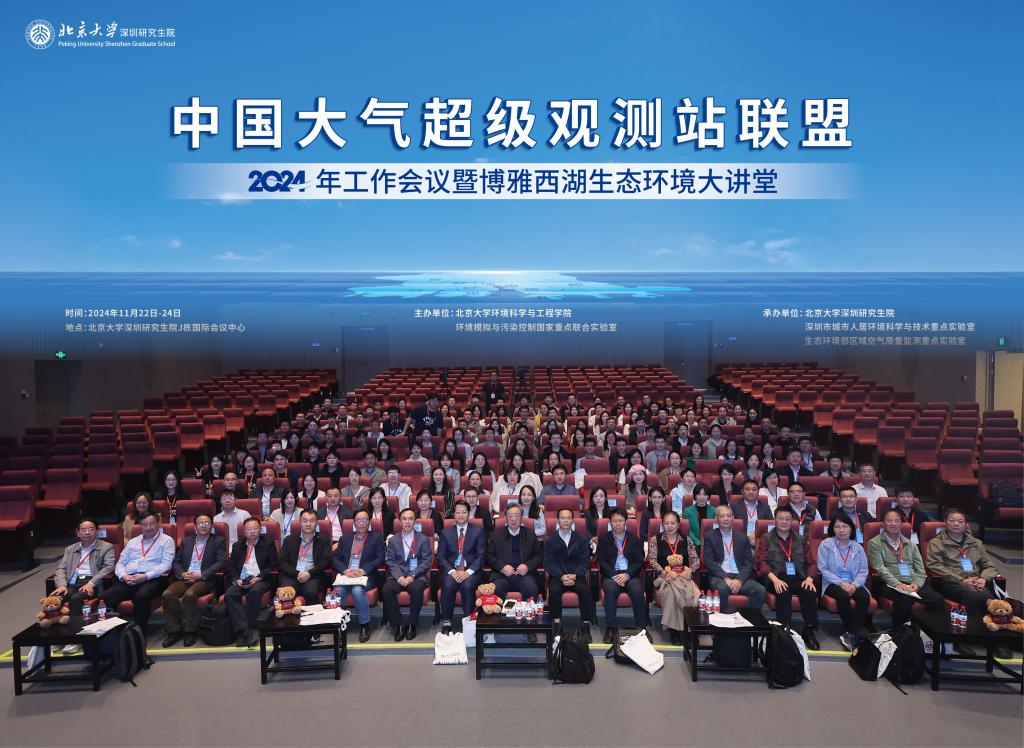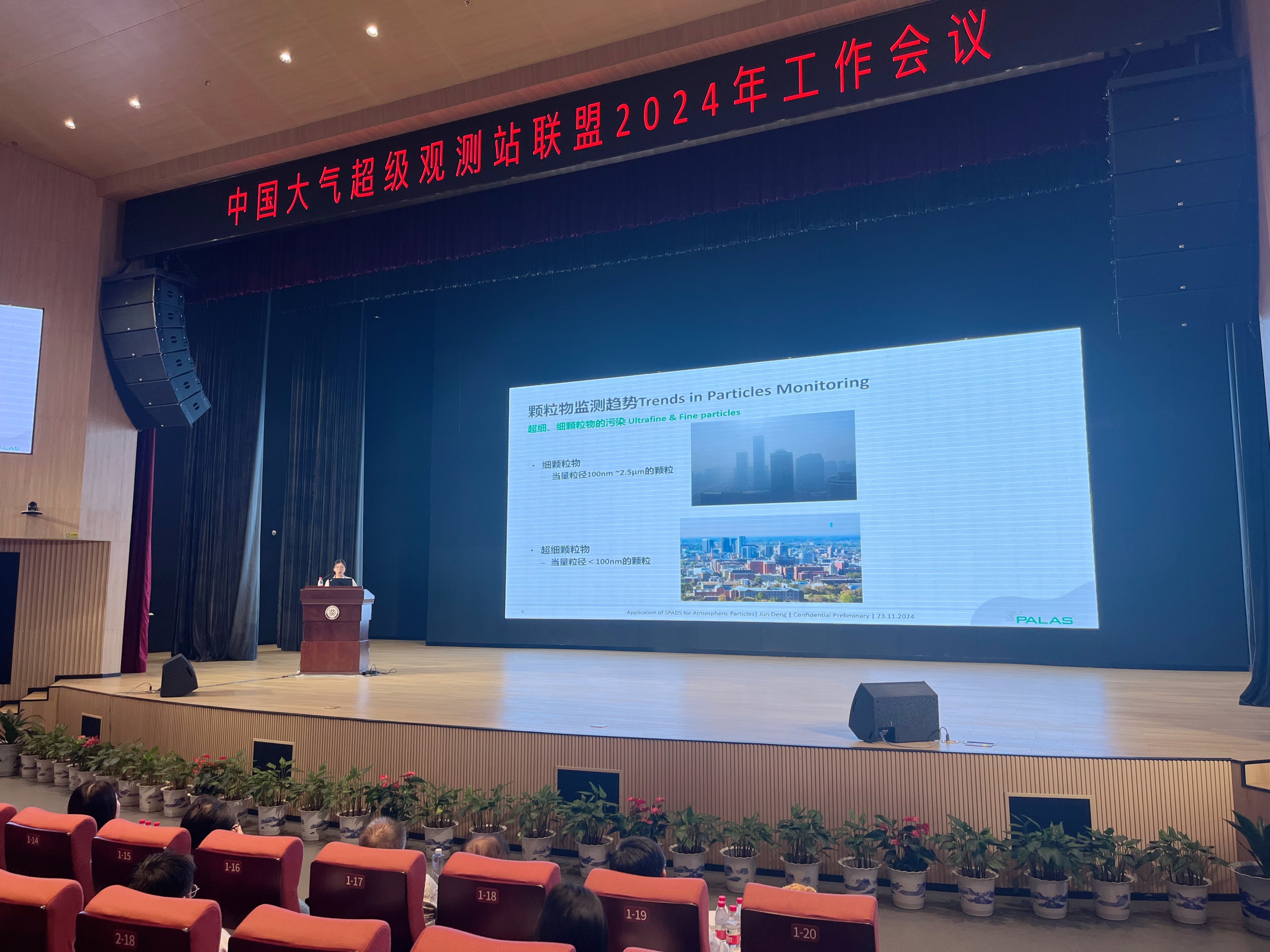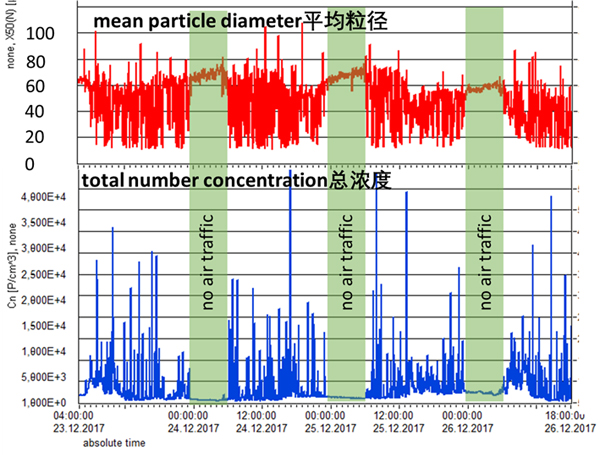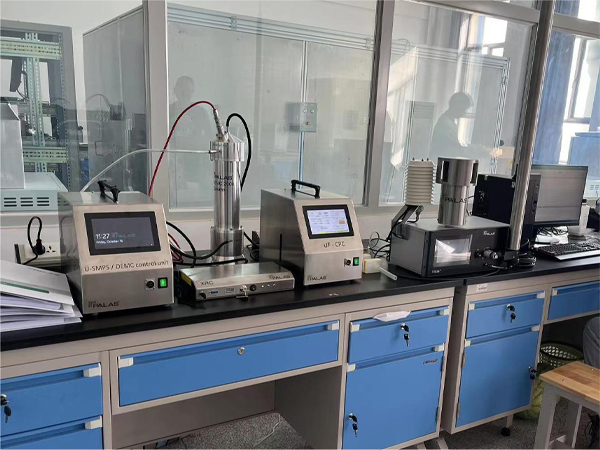On November 23, 2024, the 2024 Working Conference of the China Atmospheric Super Observatory Alliance was successfully held in Shenzhen Graduate School of Peking University. Organized by Peking University’s School of Environmental Science and Engineering and the State Key Joint Laboratory of Environmental Simulation and Pollution Control, and hosted by Peking University’s Shenzhen Graduate School, Shenzhen Key Laboratory of Urban Habitat Science and Technology, and the Key Laboratory of Regional Air Quality Monitoring of the Ministry of Ecology and Environment, the conference aims to focus on the advanced research and monitoring technologies of atmospheric pollution, and to promote the improvement of the quality of the atmospheric environment. Ms. Deng Jun, Product Manager of Environmental and Automotive business of Palas® China, was invited to deliver a speech entitled “Fine Particulate Matter and ultrafine Particulate Matter Monitoring Technology and Case sharing” at the conference, demonstrating Palas®’s professional capabilities and technical advantages in the field of environmental monitoring.


SMPS Scanning Mobility Particle Size Spectrometer
In the topic “The role of atmospheric superstation in pollution warning and prediction”, the application of Palas® SMPS Scanning Mobility Particle Size Spectrometer has attracted much attention. The instrument can provide accurate particle size distribution monitoring data from 4 nm to 1.2 μm, and is widely used in aerosol research, climate research, emission source locating and other fields. For example, at Zurich Airport, Palas® SMPS is used to monitor ultrafine particles produced by aircraft taking off and landing, providing direct data on the impact of aircraft activities on air quality. In addition, Palas® SMPS also monitors the particulate emissions caused by the ship’s activities in the port, and through the changes in the monitoring data, the departure time of the ship is inferred, demonstrating the flexibility and agility of SMPS monitoring, providing a scientific basis for pollution warning and forecasting.


Fidas® 200 Single Particle Aerosol Distribution Spectrometers (SPADS)
In the topic of “Network and joint observation of regional atmospheric superstations”, the application of Palas® Fidas® 200 Smart continuous automatic monitoring system for ambient air particles is particularly important. The system is capable of continuously and simultaneously measuring multiple PM values in real time, providing detailed information based on particle size distribution, and has high temporal resolution with data refreshed every second. The system has been used in the urban navigation monitoring project, through the Fidas® 200 Smart atmospheric navigation vehicle to achieve real-time monitoring of PM2.5, PM10 concentration, as well as humidity, temperature and pressure and other meteorological data monitoring. This provides strong data support for the joint prevention and control of regional air pollution, makes the situation of particulate matter at a glance, and provides strong support for the visualization of urban air quality.

The combination of Fidas and SMPS enables ultra-wide particle size measurement
The combination of Palas® Fidas® 200 and U-SMPS provides a practical case for the topic “Research and Development and Prospects of Atmospheric superstation monitoring Technology”. This combined technology enables real-time dynamic particle size distribution monitoring from 8 nm to 18 μm, providing a wider particle size monitoring range. Palas® particle size spectrometer has better particle size resolution up to 128 channels / 10 times particle size, supports multiple interfaces and provides remote access, provides professional services and excellent solutions for scientific research teams, and provides new possibilities for the development of atmospheric hyperstation monitoring technology.

These application examples fully demonstrate the core value of Palas® products in environmental monitoring and research. They not only provide accurate data support, but also provide a scientific decision-making basis for air quality management and environmental protection.
Air Quality Forum 2025 Invitation
Palas® invites you to the Air Quality Forum to be held in Brussels, Belgium on 26-27 February 2025. At that time, we will explore the main aspects of the European Air Quality Directive within the framework of the Green Deal, including the new revision/adjustment notes of the Directive, the challenges faced by Member States, regions and cities in implementing the directive, the relationship between air quality, public health, ecosystems and biodiversity, and the impacts (urban transport, heating, air quality monitoring and management, etc.).

Please click below to download the program to learn more. We look forward to welcoming you to the forum for an insightful exchange on the future of air quality.
Palas® demonstrated its advanced technologies and solutions in environmental monitoring in this conference, providing strong support for air pollution research and environmental quality improvement. We look forward to cooperating with more research institutes and industry experts to promote the development and application of environmental monitoring technology.
(Some content and pictures come from the organizer of the China Atmospheric Super Observatory Alliance 2024 Working Conference)
Palas® organizes a series of events on various topics to share professional knowledge of aerosol measurement technology. Palas® technical experts and industry scholars from all over the world will give you detailed online explanations. Welcome to register to attend and learn more about the conference as soon as possible!
| Date | Time | Topic | |
| 2024/12/11 | 16:00-17:00 | Hyperlocal Sensor Grids in AQM Networks – How to Make Your Data Interpretable? | Webinar |
| 2025/2/26-27 | 9:30-17:00
9:00-17:30 |
Air Quality Forum 2025 – Brussels, Belgium | Offline-Forum |
